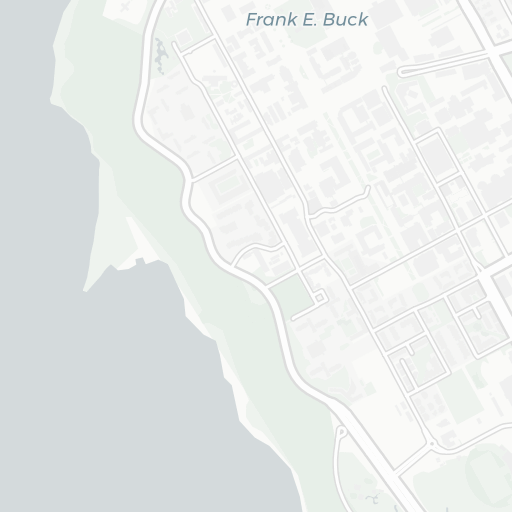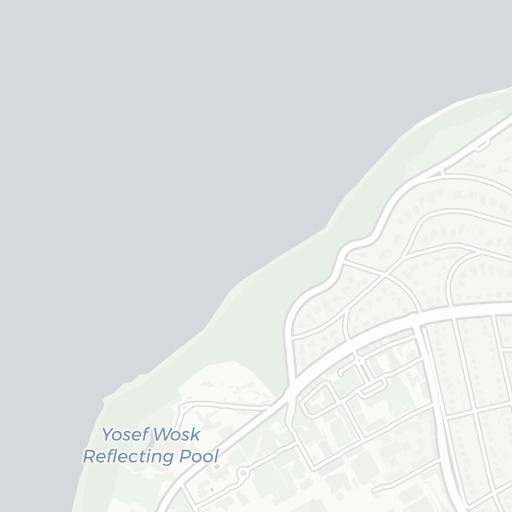UNITE
DES401 - VISIONARY HYBRIDS PROF - MARI FUJITA
T1 / 24
49.26600538365908, -123.25618055844977
M1 : Urban Study
— MAPPING
— COUNTER-MAPPING
M2
L1 : Mapping
Module 1 of DES 401 serves as the soil/ground for a semester-long project focused on urban study, emphasizing observation, inquiry, and analysis through urban mapping and counter-mapping. Students are tasked with examining a site’s history, current conditions, and speculative futures. The maps and countermaps are designed to challenge conventional representations of land and space. Through this process, we are encouraged to engage critically with the sites (UBC campus, endowment lands, pacific spirit park) and explore creative and responsive forms of representation.
Process
In a group of 5 we are to seek and share insights about the conditions of UBC Campus.
I am responsible for the condition of Social Dynamics & Demographics.
When I begin analyzing anything I find it helps to draw a comparison and give it a friend who’s culturally alike/opposing.
The first one that comes to mind is University of Washington, Seattle for its environmental and sociocultural similarities.
(shown are 4 categories in orange)
ENVIRONMENTAL SIMILARITIES
Location & Climate
Like UBC, the University of Washington is situated in the Pacific Northwest, with a similar temperate coastal climate. Both campuses experience similar environmental concerns, such as heavy rainfall, proximity to water, and the integration of natural landscapes into the urban fabric.
Proximity to Nature
Both universities have campuses that are surrounded by lush green spaces and are close to large bodies of water (Pacific Spirit Park for UBC and Union Bay Natural Area for the University of Washington). This integration of the natural environment into campus planning is a shared feature.
SOCIAL DYNAMICS
Student Population
The University of Washington has a student body of approximately 49,000, with a significant proportion of international students, much like UBC. It is known for its multicultural and diverse student population, attracting students from across the world.
Indigenous Presence
Like UBC’s relationship with the Musqueam people, the University of Washington is on land that has historical significance to Indigenous peoples, particularly the Duwamish tribe. The university actively engages in Indigenous partnerships and acknowledges the traditional lands on which it resides, similar to UBC’s reconciliation efforts.
SUSTAINABILITY
Walkability & Connectivity
The University of Washington has invested heavily in creating a pedestrian-friendly campus, with multiple green pathways and integrated public transport, including a light rail system. This aligns closely with UBC’s push for enhanced walkability and transit connectivity as part of its Vision 2050.
Housing & Affordability
Both universities face challenges related to housing affordability due to their urban locations. The University of Washington, like UBC, is working on affordable housing initiatives for students and faculty, while also expanding residential capacity on campus.
Sustainability
The University of Washington has a robust sustainability program, integrating green roofs, stormwater management systems, and biodiversity enhancement projects—parallels to UBC’s sustainability goals under the Vision 2050 plan.
& ACADEMIC HUBS
Community Engagement
The University of Washington emphasizes the integration of academic spaces with the local community, similar to UBC’s Community Heart concept. There are hubs on campus designed for interaction between students, faculty, and the broader Seattle community.
Learning Corridors
The University of Washington also develops interdisciplinary learning environments, with spaces designed to foster collaboration between different academic disciplines, much like UBC’s plans for Learning Hubs.
These factors are based on well-established principles in urban design and campus planning found in:
1. Gensler’s Campus Design Research – “Changing Course: Connecting Campus Design to a New Kind of Student”
2. Campus and the City: Urban Design for the Knowledge Society by Kees Christiaanse
Both UBC and the UW attract diverse populations of students, staff, and faculty from across the world. This creates a multicultural environment where different languages, cultures, and worldviews coexist. The challenge and opportunity lie in creating inclusive spaces where all groups feel represented and supported.
On a campus, this manifests in the creation of multicultural centers, diverse food offerings, and programs that celebrate cultural events. Social tensions can arise if certain groups feel underrepresented or marginalized, but this diversity also fosters innovation and cultural exchange.
HOUSING & AFFORDABILITY
A major social dynamic revolves around housing. Both campuses struggle with housing affordability, especially given their urban locations in expensive cities. The integration of affordable housing for students, staff, and faculty, as well as residential communities, impacts social mobility, inclusion, and the overall sense of belonging.
Socially, this can lead to tension between those who can afford housing close to campus and those forced to commute long distances. Affordable housing initiatives are key to maintaining social equity and reducing stratification within the community.
MOBILITY & ACCESSIBILITY
Walkability and access to public transport are critical in shaping social interactions on campuses. A well-connected campus encourages more spontaneous interactions and reduces social isolation. In contrast, if certain groups are more dependent on cars or live far away, they may experience social exclusion.
The presence of shared spaces like parks, libraries, cafés, and public squares fosters community building and increases the chances for social engagement.
UBC functions like a small city, with its own governance, services, and even economy. The social dynamic here mirrors that of a city: you have power structures, class differences, and subcultures. For example, faculty may occupy different social spaces than undergraduates, and these divisions shape how people interact.
There is a lot of texture within formal and informal groups, ranging from student organizations to local activist movements, which play a role in how the campus evolves socially and politically.
INDIGENOUS PRESENCE & RECONCITLATION
The integration of Indigenous knowledge and communities is increasingly important at both UBC and UW. As these campuses engage in reconciliation efforts, the way Indigenous cultures are represented and valued becomes a key social dynamic.
This includes the creation of Indigenous spaces, language programs, and recognition of traditional lands, which shapes both the physical environment and the social relationships between Indigenous and non-Indigenous communities.
ECONOMIC & SOCIAL STRATIFICATION
A campus is also a place where social and economic differences become apparent. Whether it’s between domestic and international students, or between faculty and staff, different levels of access to resources (such as housing, academic support, and social networks) can reinforce stratification. Think parking lots with tons of luxury cars next to bicycle racks.
Efforts to address this dynamic often come through scholarship programs, affordable housing, and support networks designed to bridge gaps between these groups.
Universities are hubs for intellectual discourse, encouraging innovation and creativity. This dynamic is often driven by interdisciplinary collaboration, public lectures, and academic communities that encourage people to think critically and engage in social debate. Mapping international and interdisciplinary visitors is one way to begin inquiring about this.
The design of the campus, with open spaces and accessible research hubs, plays a crucial role in encouraging the exchange of ideas.
MENTAL HEALTH + WELLBEING
The well-being of students and staff plays a significant role in shaping social dynamics. With increasing attention to mental health, campuses are investing in wellness centers, recreational activities, and support networks. Refer to the new recreation centre being built.
A campus that fosters well-being—through social spaces, green areas, and access to mental health resources—helps create a positive and engaged social atmosphere.
TECHNOLOGY & DIGITAL SPACES
The rise of digital interaction has introduced a new layer to social dynamics. Online communities, remote learning, and virtual events now play a significant role in how people connect and engage, especially post-pandemic.
The campus’s role as a physical space for social connection is complemented (or in some cases, replaced) by digital interactions, changing how social networks form.
How can campuses be designed to complement digital spaces while still promoting face-to-face interaction and engagement?
| CATEGORY |
DETAILS |
|---|---|
Total Student Population |
60,863 students at UBC Vancouver in 2023-2024. |
Domestic Students |
72% of the student population. |
| International Students | 28% of the student population, representing over 160 countries (top countries: China, India, U.S.). China (4,223 students), India (2,230 students), United States (1,210 students) |
| Racialized Student Representation | UBC’s Student Diversity Census (2023) aims to better understand the representation of racialized students. While exact figures are still being gathered, UBC has acknowledged gaps in representation and is working on increasing support for racialized students. |
Indigenous Students |
UBC has a growing Indigenous student population, with around 1,200 Indigenous students across undergraduate and graduate programs. |
Graduate Students |
Masters 7,328 students, Doctoral 6,687 students |
Top Undergrad Faculties |
Arts (31%), Science (21%), Applied Science (12%), Business (12%), Education (6%), Medicine (3%) |
Top Grad Faculties |
Arts (20%), Science (17%), Applied Science (15%), Medicine (6%) |
Students With Disabilities 2SLGBTQIA+ Students |
UBC offers services for students with disabilities, though exact numbers are not widely available. Programs provide priority housing, financial support, and accessibility services. UBC offers inclusive environments through programs like the Positive Space Campaign and gender-inclusive facilities, but no dedicated housing specifically for 2SLGBTQIA+ students. |
| CATEGORY |
DETAILS |
|---|---|
IT Infrastructure |
Wi-Fi network coverage (Eduroam), cybersecurity policies, and high-speed internet access across campus. UBC provides services like UBCNET, myVPN, and encryption services to ensure secure data transmission. Over 9,000 access points for wireless connectivity on campus. |
Digital Tools for Students |
Free/discounted software like MATLAB, SPSS, and NVivo are available. UBC also provides cloud services such as Microsoft Teams, Zoom, and Canvas for collaboration. The Qualtrics survey tool is widely used for gathering student data and opinions, free for all students with CWL. |
Research & Teaching Software |
High-performance computing available for research, with AI and machine learning tools. UBC's research collaborations include partnerships with Microsoft and Amazon, supporting over 1,150 research projects annually. |
Online Library Access |
Digital collections include over 7.8 million volumes across UBC’s libraries, providing access to e-books, journals, and research tools like RefWorks. The library's online access facilitates remote learning and research. |
Accessibility & Inclusivity in Tech |
Assistive technologies like screen readers and captioning software are integrated into UBC’s platforms. Digital access programs ensure students with disabilities receive equitable resources, including priority housing and adaptive tech. |
Social Media Platforms & Engagement |
82% of students report using Instagram for engagement, 12% on TikTok, and 5% on Facebook. UBC’s social media fosters inclusivity, using branded content to promote community events, academic updates, and student achievements. |
| Virtual Spaces for Collaboration | Canvas and Microsoft Teams are used by nearly all students for academic purposes, and they also facilitate social interaction. UBC’s Qualtrics platform has seen wide use in student research and feedback, with no limits on survey question numbers. |
| Social Dynamics in Virtual Events | UBC student clubs and organizations frequently use Instagram and Facebook to host hybrid and virtual events. UBC Recreation also promotes activities through social media, and over 30% of students have never seen these promotions, indicating opportunities for greater outreach. |
| Inclusivity & Access |
AMS and student clubs promote inclusivity through digital spaces on WeChat, Discord, and Instagram. These platforms are particularly important for international students and 2SLGBTQIA+ groups, fostering community in both virtual and physical settings. |
| CATEGORY |
DETAILS |
|---|---|
IT Infrastructure |
Wi-Fi network coverage (Eduroam), cybersecurity policies, and high-speed internet access across campus. UBC provides services like UBCNET, myVPN, and encryption services to ensure secure data transmission. Over 9,000 access points for wireless connectivity on campus. |
Digital Tools for Students |
Free/discounted software like MATLAB, SPSS, and NVivo are available. UBC also provides cloud services such as Microsoft Teams, Zoom, and Canvas for collaboration. The Qualtrics survey tool is widely used for gathering student data and opinions, free for all students with CWL. |
Research & Teaching Software |
High-performance computing available for research, with AI and machine learning tools. UBC's research collaborations include partnerships with Microsoft and Amazon, supporting over 1,150 research projects annually. |
Online Library Access |
Digital collections include over 7.8 million volumes across UBC’s libraries, providing access to e-books, journals, and research tools like RefWorks. The library's online access facilitates remote learning and research. |
Accessibility & Inclusivity in Tech |
Assistive technologies like screen readers and captioning software are integrated into UBC’s platforms. Digital access programs ensure students with disabilities receive equitable resources, including priority housing and adaptive tech. |
Social Media Platforms & Engagement |
82% of students report using Instagram for engagement, 12% on TikTok, and 5% on Facebook. UBC’s social media fosters inclusivity, using branded content to promote community events, academic updates, and student achievements. |
| Virtual Spaces for Collaboration | Canvas and Microsoft Teams are used by nearly all students for academic purposes, and they also facilitate social interaction. UBC’s Qualtrics platform has seen wide use in student research and feedback, with no limits on survey question numbers. |
| Social Dynamics in Virtual Events | UBC student clubs and organizations frequently use Instagram and Facebook to host hybrid and virtual events. UBC Recreation also promotes activities through social media, and over 30% of students have never seen these promotions, indicating opportunities for greater outreach. |
| Inclusivity & Access |
AMS and student clubs promote inclusivity through digital spaces on WeChat, Discord, and Instagram. These platforms are particularly important for international students and 2SLGBTQIA+ groups, fostering community in both virtual and physical settings. |
| CATEGORY |
DETAILS |
|---|---|
IT Infrastructure |
Wi-Fi network coverage (Eduroam), cybersecurity policies, and high-speed internet access across campus. UBC provides services like UBCNET, myVPN, and encryption services to ensure secure data transmission. Over 9,000 access points for wireless connectivity on campus. |
Digital Tools for Students |
Free/discounted software like MATLAB, SPSS, and NVivo are available. UBC also provides cloud services such as Microsoft Teams, Zoom, and Canvas for collaboration. The Qualtrics survey tool is widely used for gathering student data and opinions, free for all students with CWL. |
Research & Teaching Software |
High-performance computing available for research, with AI and machine learning tools. UBC's research collaborations include partnerships with Microsoft and Amazon, supporting over 1,150 research projects annually. |
Online Library Access |
Digital collections include over 7.8 million volumes across UBC’s libraries, providing access to e-books, journals, and research tools like RefWorks. The library's online access facilitates remote learning and research. |
Accessibility & Inclusivity in Tech |
Assistive technologies like screen readers and captioning software are integrated into UBC’s platforms. Digital access programs ensure students with disabilities receive equitable resources, including priority housing and adaptive tech. |
Social Media Platforms & Engagement |
82% of students report using Instagram for engagement, 12% on TikTok, and 5% on Facebook. UBC’s social media fosters inclusivity, using branded content to promote community events, academic updates, and student achievements. |
| Virtual Spaces for Collaboration | Canvas and Microsoft Teams are used by nearly all students for academic purposes, and they also facilitate social interaction. UBC’s Qualtrics platform has seen wide use in student research and feedback, with no limits on survey question numbers. |
| Social Dynamics in Virtual Events | UBC student clubs and organizations frequently use Instagram and Facebook to host hybrid and virtual events. UBC Recreation also promotes activities through social media, and over 30% of students have never seen these promotions, indicating opportunities for greater outreach. |
|
Inclusivity & Access |
AMS and student clubs promote inclusivity through digital spaces on WeChat, Discord, and Instagram. These platforms are particularly important for international students and 2SLGBTQIA+ groups, fostering community in both virtual and physical settings. |
| CATEGORY |
DETAILS |
|---|---|
IT Infrastructure |
Wi-Fi network coverage (Eduroam), cybersecurity policies, and high-speed internet access across campus. UBC provides services like UBCNET, myVPN, and encryption services to ensure secure data transmission. Over 9,000 access points for wireless connectivity on campus. |
Digital Tools for Students |
Free/discounted software like MATLAB, SPSS, and NVivo are available. UBC also provides cloud services such as Microsoft Teams, Zoom, and Canvas for collaboration. The Qualtrics survey tool is widely used for gathering student data and opinions, free for all students with CWL. |
Research & Teaching Software |
High-performance computing available for research, with AI and machine learning tools. UBC's research collaborations include partnerships with Microsoft and Amazon, supporting over 1,150 research projects annually. |
Online Library Access |
Digital collections include over 7.8 million volumes across UBC’s libraries, providing access to e-books, journals, and research tools like RefWorks. The library's online access facilitates remote learning and research. |
Accessibility & Inclusivity in Tech |
Assistive technologies like screen readers and captioning software are integrated into UBC’s platforms. Digital access programs ensure students with disabilities receive equitable resources, including priority housing and adaptive tech. |
Social Media Platforms & Engagement |
82% of students report using Instagram for engagement, 12% on TikTok, and 5% on Facebook. UBC’s social media fosters inclusivity, using branded content to promote community events, academic updates, and student achievements. |
| Virtual Spaces for Collaboration | Canvas and Microsoft Teams are used by nearly all students for academic purposes, and they also facilitate social interaction. UBC’s Qualtrics platform has seen wide use in student research and feedback, with no limits on survey question numbers. |
| Social Dynamics in Virtual Events | UBC student clubs and organizations frequently use Instagram and Facebook to host hybrid and virtual events. UBC Recreation also promotes activities through social media, and over 30% of students have never seen these promotions, indicating opportunities for greater outreach. |
| Inclusivity & Access |
AMS and student clubs promote inclusivity through digital spaces on WeChat, Discord, and Instagram. These platforms are particularly important for international students and 2SLGBTQIA+ groups, fostering community in both virtual and physical settings. |
| CATEGORY |
DETAILS |
|---|---|
IT Infrastructure |
Wi-Fi network coverage (Eduroam), cybersecurity policies, and high-speed internet access across campus. UBC provides services like UBCNET, myVPN, and encryption services to ensure secure data transmission. Over 9,000 access points for wireless connectivity on campus. |
Digital Tools for Students |
Free/discounted software like MATLAB, SPSS, and NVivo are available. UBC also provides cloud services such as Microsoft Teams, Zoom, and Canvas for collaboration. The Qualtrics survey tool is widely used for gathering student data and opinions, free for all students with CWL. |
Research & Teaching Software |
High-performance computing available for research, with AI and machine learning tools. UBC's research collaborations include partnerships with Microsoft and Amazon, supporting over 1,150 research projects annually. |
Online Library Access |
Digital collections include over 7.8 million volumes across UBC’s libraries, providing access to e-books, journals, and research tools like RefWorks. The library's online access facilitates remote learning and research. |
Accessibility & Inclusivity in Tech |
Assistive technologies like screen readers and captioning software are integrated into UBC’s platforms. Digital access programs ensure students with disabilities receive equitable resources, including priority housing and adaptive tech. |
Social Media Platforms & Engagement |
82% of students report using Instagram for engagement, 12% on TikTok, and 5% on Facebook. UBC’s social media fosters inclusivity, using branded content to promote community events, academic updates, and student achievements. |
| Virtual Spaces for Collaboration | Canvas and Microsoft Teams are used by nearly all students for academic purposes, and they also facilitate social interaction. UBC’s Qualtrics platform has seen wide use in student research and feedback, with no limits on survey question numbers. |
| Social Dynamics in Virtual Events | UBC student clubs and organizations frequently use Instagram and Facebook to host hybrid and virtual events. UBC Recreation also promotes activities through social media, and over 30% of students have never seen these promotions, indicating opportunities for greater outreach. |
| Inclusivity & Access |
AMS and student clubs promote inclusivity through digital spaces on WeChat, Discord, and Instagram. These platforms are particularly important for international students and 2SLGBTQIA+ groups, fostering community in both virtual and physical settings. |
/* Map and Body Styling */
html, body, #map {
height: 100%;
margin: 0;
padding: 0;
}
#map {
height: 100vh;
width: 100vw;
}
/* Apply IBM Plex Sans font */
body, .legends, .leaflet-popup-content, .leaflet-popup-content-wrapper, .leaflet-popup-tip {
font-family: 'IBM Plex Sans', sans-serif;
}
/* Ensure font is applied to all elements inside the pop-up */
.leaflet-popup-content-wrapper, .leaflet-popup-content-wrapper * {
font-family: 'IBM Plex Sans', sans-serif !important;
}
/* Legends Styling */
.legends {
background: white;
padding: 10px;
line-height: 18px;
color: #555;
font-size: 12px;
max-width: 200px;
overflow: auto;
}
.legend-title {
font-weight: bold;
cursor: pointer;
display: flex;
align-items: center;
font-size: 14px;
}
.legend-title .legend-arrow {
margin-right: 8px;
}
.legend-content {
margin-left: 15px;
display: none;
}
.legend-item {
margin-bottom: 5px;
}
.legend-symbol {
display: inline-block;
margin-right: 8px;
vertical-align: middle;
}
/* Pop-up Styling */
.leaflet-popup-content {
font-size: 14px;
color: #333;
}
.leaflet-popup-content b {
font-weight: bold;
font-size: 16px;
}
/* Hide the close button in the pop-up */
.leaflet-popup-close-button {
display: none;
}
/* Remove the drop shadow from the pop-up */
.leaflet-popup-content-wrapper {
box-shadow: none;
}
/* Specific Sizes for Legend Symbols */
.legend-symbol.small {
width: 12px;
height: 12px;
border-radius: 50%;
background: gray;
}
.legend-symbol.medium {
width: 18px;
height: 18px;
border-radius: 50%;
background: gray;
}
.legend-symbol.large {
width: 24px;
height: 24px;
border-radius: 50%;
background: gray;
}
.legend-symbol.xlarge {
width: 30px;
height: 30px;
border-radius: 50%;
background: gray;
}
.legend-symbol.xxlarge {
width: 36px;
height: 36px;
border-radius: 50%;
background: gray;
}








































▶ Visitor Estimate
▶ Accessibility
▶ Space Types
Leaflet © OpenStreetMap contributors & CartoDB
▶ Accessibility
▶ Space Types
${symbolHTML}
`;
});
// Event listeners for accessibility toggles
accessibilityContent.querySelectorAll('.accessibility-toggle').forEach(function(checkbox) {
checkbox.addEventListener('change', function() {
var accessibilityKey = checkbox.getAttribute('data-accessibility');
var layer = accessibilityLayers[accessibilityKey];
if (checkbox.checked) {
map.addLayer(layer);
} else {
map.removeLayer(layer);
}
});
});
// Toggle functionality for accessibility legend
document.getElementById('accessibility-legend-title').addEventListener('click', function() {
var content = document.getElementById('accessibility-legend-content');
var arrow = document.getElementById('accessibility-arrow');
if (content.style.display === 'none') {
content.style.display = 'block';
arrow.innerHTML = '▼'; // Down arrow
} else {
content.style.display = 'none';
arrow.innerHTML = '▶'; // Right arrow
}
});
// Initially collapse the accessibility legend
document.getElementById('accessibility-legend-content').style.display = 'none';
// Populate Categories Legend with toggles
var categoriesContent = document.getElementById('categories-legend-content');
for (var key in layers) {
categoriesContent.innerHTML += `